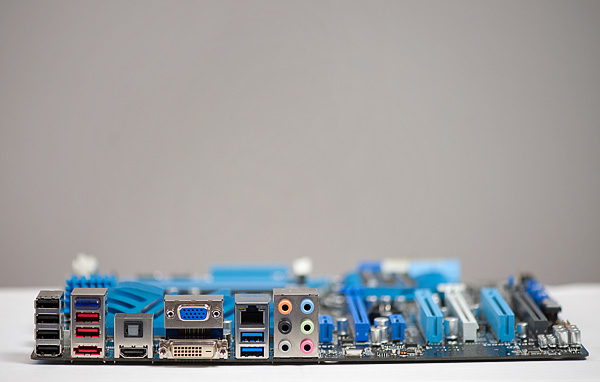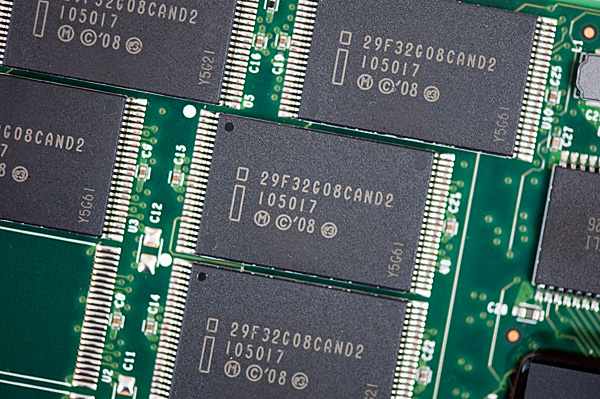Intel Z68 Chipset & Smart Response Technology (SSD Caching) Review
by Anand Lal Shimpi on May 11, 2011 2:34 AM ESTFinal Words
Intel's Z68 should have been the one and only high end launch chipset offered with Sandy Bridge. It enables all of the configurations we could possibly want with Sandy Bridge and does so without making any sacrifices. Users should be able to overclock their CPU and use integrated graphics if they'd like. While Z68 gives us pretty much exactly what we asked for, it is troubling that we even had to ask for it in the first place. With Intel holding onto a considerable performance advantage and a growing manufacturing advantage, I am worried that this may be a sign of things to come. It was strong competition from AMD that pushed Intel into executing so flawlessly time and time again, but it also put Intel in a position where it can enforce limits on things like overclocking. Let's hope that Z68 corrected a mistake that we won't see repeated.
Intel's Smart Response Technology (SRT) is an interesting addition to the mix. For starters, it's not going to make your high end SSD obsolete. You'll still get better overall performance by grabbing a large (80-160GB+) SSD, putting your OS + applications on it, and manually moving all of your large media files to a separate hard drive. What SRT does offer however is a stepping stone to a full blown SSD + HDD setup and a solution that doesn't require end user management. You don't get the same performance as a large dedicated SSD, but you can turn any hard drive into a much higher performing storage device. Paired with a 20GB SLC SSD cache, I could turn a 4-year-old 1TB hard drive into something that was 41% faster than a VelociRaptor.
If you're building a system for someone who isn't going to want to manage multiple drive letters, SRT may be a good alternative. Similarly, if you're building a budget box that won't allow for a large expensive SSD, the $110 adder for an Intel SSD 311 can easily double the performance of even the fastest hard drive you could put in there. The most obvious win here is the lighter user that only runs a handful of applications on a regular basis. As our tests have shown, for light workloads you can easily get the performance of an X25-M G2 out of a fast hard drive + an SSD cache. Even gamers may find use in SSD caching as they could dedicate a portion of their SSD to acting as a cache for a dedicated games HDD, thereby speeding up launch and level load times for the games that reside on that drive. The fact that you can use any SSD as a cache is nice since it gives you something to do with your old SSDs when you upgrade.
I believe there's a real future in SRT, however it needs to be available on more than just the highest end Sandy Bridge motherboards. I'd like to see SSD caching available on all Intel chipsets (something that we'll get with Ivy Bridge and the 7-series chipsets next year), particularly on the more mainstream platforms since that appears to be the best fit for the technology. I would also prefer a larger cache drive offering from Intel (at least 40GB) as it wasn't that difficult to evict frequently used programs from the SSD cache. The beauty of NAND is that we'll of course get larger capacities at similar price points down the road. Along those lines I view SRT as more of a good start to a great technology. Now it's just a matter of getting it everywhere.












106 Comments
View All Comments
cbass64 - Wednesday, May 11, 2011 - link
RAID0 can't even compare. With PCMark Vantage a RAID0 with MD's gives you roughly a 10% increase in performance in the HDD suite. A high end SSD is is 300-400% faster in the Vantage HDD suite scores. Even if you only achieve 50% of the SSD performance increase with SRT you'd still be seeing 150-200% increase and this article seems to claim that SRT is much closer to a pure SSD than 50%.Obviously benchmarks like Vantage HDD suite don't always reflect real world performance but I think there's still an obvious difference between 10% and a couple hundred %...
Hrel - Thursday, May 12, 2011 - link
all I know is since I switched to RAID 0 my games load in 2/3 the time they used to. 10% is crazy. RAID 0 should get you a 50% performance improvement across the board; you did something wrong.DanNeely - Thursday, May 12, 2011 - link
Raid only helps with sequential transfers. If Vantage has a lot of random IO with small files it won't do any good.don_k - Wednesday, May 11, 2011 - link
Or the fact that it is an entirely software based solution. Intel's software does not, as far as I and google know, run on linux, nor would I be inclined to install such software on linux even if it were. So this is a non-starter for me. For steam and games I say get a 60-120gb consumer level ssd and call it a day. No software glitches, no stuff like that.This kind of caching needs to be implemented at the filesystem level if you ask me, which is what I hope some linux filesystems will bring 'soon'. On windows the outlook is bleak.
jzodda - Wednesday, May 11, 2011 - link
Are there any plans in the future of this technology being made available to P67 boards?Before I read this I thought it was a chipset feature. I had no idea this was being implemented in software at a driver level.
I am hoping that after a reasonable amount of time passes they make this available for P67 users. I understand that for now they want to add some value to this new launch but after some time passes why not?
michael2k - Wednesday, May 11, 2011 - link
Given that the drive has built in 4gb of flash, it would be very interesting to compare this to the aforementioned SRT. Architecturally similar, though it requires two drives instead of one. Heck, what would happen if you used SRT with a Seagate Momentus?kenthaman - Wednesday, May 11, 2011 - link
1. You mention that:"Even gamers may find use in SSD caching as they could dedicate a portion of their SSD to acting as a cache for a dedicated games HDD, thereby speeding up launch and level load times for the games that reside on that drive."
Does Intel make any mention of possible future software versions allowing user customization to specifically select applications to take precedence over others to remain in cache. For example say that you regularly run 10 - 12 applications (assuming that this work load is sufficient to begin the eviction process), rather than having the algorithm just select the least utilized files have it so that you can point to an exe and then it could track the associated files to keep them in cache above the priority of the standard cleaning algorithm.
2. Would it even make sense to use this in a system that has a 40/64/80 gig OS SSD and then link this to a HDD/array or would the system SSD already be handling the caching? Just trying to see if this would help offload some of the work/storage to the larger HDDs since space is already limited on these smaller.
Midwayman - Wednesday, May 11, 2011 - link
What is the long term use degradation like? I know without TRIM SSD's tend to lose performance over time. Is there something like trim happening here since this all seems to be below the OS level?jiffylube1024 - Wednesday, May 11, 2011 - link
Great review, as always on Anandtech!This technology looks to be a boon for so many users. Whereas technophiles who live on the bleeding edge (like me) probably won't settle for anything less than an SSD for their main boot drive, this SSD cache + HDD combo looks to be an amazing alternative for the vast majority of users out there.
There's several reasons why I really like this technology:
1. Many users are not smart and savvy at organizing their files, so a 500GB+ C drive is necessary. That is not feasible with today's SSD prices.
2. This allows gamers to have a large HDD as their boot drive and an SSD to speed up game loads. A 64GB SSD would be fantastic for this as the cache!
3. This makes the ultimate drop-in upgrade. You can build a PC now with an HDD and pop in an SSD later for a wicked speed bump!
I'm strongly considering swapping my P67 for a Z68 at some point, moving my 160GB SSD to my laptop (where I don't need tons of space but the boot speed is appreciated), and using a 30-60GB SSD as a cache on my desktop for a Seagate 7200.12 500GB, my favourite cheap boot HDD.
samsp99 - Wednesday, May 11, 2011 - link
Is the intel 311 the best choice for the $$, or would other SSDs of a similar cost perform better. For example the egg has OCZ Vertex 2 and other sandforce based drives in the 60GB range for approx $130. That is a better cache size than the 20GB of the intel drive.Sandforce relies on compression to get some of its high data rates, would that still work well in this kind of a cache scenario?